As the compact SUV segment grows in popularity, the comparison between competitors becomes increasingly crucial for potential buyers. Two standout models in this category are the Hyundai Kona and the Kia Niro. While both brands fall under the umbrella of the Hyundai Motor Group, they offer unique features and capabilities that appeal to different types of drivers.
Hyundai Kona vs Kia Niro – Performance, range & efficiency compared
Compare performance, boot capacity, efficiency and price at a glance.
Find out which car is the better choice for you – Hyundai Kona or Kia Niro?
Design and Dimensions
Starting with exterior dimensions, the Hyundai Kona boasts a length of 4,350 mm and a height of 1,585 mm, making it slightly more substantial than the Kia Niro, which measures 4,420 mm in length and 1,545 mm in height. Both vehicles have a width of 1,825 mm, providing a stable stance on the road.
In terms of aesthetic appeal, the Kona carries a bold and sporty design with aggressive lines and a distinct front fascia, aimed at drivers seeking a more dynamic look. The Niro, however, adopts a more streamlined appearance that emphasizes efficiency and eco-friendliness, highlighting its hybrid and plug-in hybrid capabilities.
Powertrains and Performance
The Hyundai Kona offers a broader range of engine options, including petrol, full hybrid, and electric variants. Power outputs range from 100 HP to a robust 218 HP in the electric model, catering to a wider audience. The Kona's acceleration performance is impressive, with certain models achieving 0-100 km/h in as little as 7.8 seconds, demonstrating strong performance across the board.
On the other hand, the Kia Niro is more focused on hybrid technology, offering full hybrid and plug-in hybrid configurations with power outputs up to 171 HP. It accelerates from 0-100 km/h in 10.4 seconds at its quickest, which is decent yet reflective of its hybrid nature. The Niro excels in fuel efficiency, achieving consumption figures as low as 0.8 L/100km in its plug-in hybrid variant.
Electric Range and Battery Capacity
When it comes to electric capabilities, the Kia Niro’s plug-in hybrid offers an electric range of approximately 65 km, enabling limited all-electric driving. However, the Hyundai Kona outshines in this area, with its electric variant providing up to 514 km on a single charge—making it a more appealing choice for those seeking longer ranges and electric driving.
The battery capacity of the Kona also surpasses that of the Niro, with options reaching up to 65.4 kWh compared to the Niro’s 11.1 kWh in its hybrid variants. This difference significantly impacts overall efficiency and driving range.
Interior Features and Comfort
Inside, both models provide rooms for five passengers with spaciousness conducive to comfort. The Kona offers a trunk capacity of 466 liters, slightly outpacing the Niro's 451 liters. However, the Niro's interior leans heavily into eco-conscious materials and innovative tech, aligning with its green image.
Infotainment systems in both vehicles are user-friendly, equipped with modern connectivity options such as Android Auto and Apple CarPlay. The Niro boasts advanced driver assistance features that advocate safety and convenience, including adaptive cruise control and lane-keeping assist.
Conclusion: Choosing the Right Fit
The choice between the Hyundai Kona and Kia Niro ultimately lies in the buyer's needs and preferences. The Kona stands out for those desiring versatility in powertrains and a sporty aesthetic. Conversely, the Kia Niro caters to eco-conscious consumers looking for hybrid efficiency and cutting-edge technological features.
Both vehicles exemplify the quality and innovation of their respective brands, making them excellent contenders in the compact SUV market. Regardless of the choice, prospective buyers will find satisfaction in the performance, comfort, and technology these models have to offer.
Here’s where it gets real: The technical differences in detail
Costs and Efficiency:
Price and efficiency are often the first things buyers look at. Here it becomes clear which model has the long-term edge – whether at the pump, the plug, or in purchase price.
Hyundai Kona has a distinct advantage in terms of price – it starts at 23100 £, while the Kia Niro costs 29100 £. That’s a price difference of around 6077 £.
Fuel consumption also shows a difference: Kia Niro manages with 2.40 L and is therefore convincingly more efficient than the Hyundai Kona with 4.60 L. The difference is about 2.20 L per 100 km.
As for range, the Hyundai Kona performs clearly better – achieving up to 514 km, about 452 km more than the Kia Niro.
Engine and Performance:
Power, torque and acceleration are the classic benchmarks for car enthusiasts – and here, some clear differences start to show.
When it comes to engine power, the Hyundai Kona has a a bit edge – offering 218 HP compared to 180 HP. That’s roughly 38 HP more horsepower.
In acceleration from 0 to 100 km/h, the Hyundai Kona is evident quicker – completing the sprint in 7.80 s, while the Kia Niro takes 9.90 s. That’s about 2.10 s faster.
In terms of top speed, the Hyundai Kona performs a bit better – reaching 210 km/h, while the Kia Niro tops out at 185 km/h. The difference is around 25 km/h.
Both models offer the same torque – 265 Nm.
Space and Everyday Use:
Cabin size, boot volume and payload all play a role in everyday practicality. Here, comfort and flexibility make the difference.
Both vehicles offer seating for 5 people.
In curb weight, Hyundai Kona is slight lighter – 1370 kg compared to 1474 kg. The difference is around 104 kg.
In terms of boot space, the Hyundai Kona offers minimal more room – 466 L compared to 451 L. That’s a difference of about 15 L.
In maximum load capacity, the Kia Niro performs to a small extent better – up to 1445 L, which is about 145 L more than the Hyundai Kona.
When it comes to payload, Hyundai Kona hardly perceptible takes the win – 490 kg compared to 466 kg. That’s a difference of about 24 kg.
Who wins the race?
The Hyundai Kona proves to be leaves the rival little chance and therefore becomes our DriveDuel Champion!
Hyundai Kona is the better all-rounder in this comparison.
 @ Hyundai Motor Company
@ Hyundai Motor Company
Hyundai Kona
Hyundai Kona
The Hyundai Kona wears its personality on the outside with bold styling and sprightly handling that turns city driving into something a little more fun than a commute. It blends practical space, modern tech and sensible running costs into a compact, stylish package — a smart pick if you want flair without paying luxury prices.
details @ Hyundai Motor Company
@ Hyundai Motor Company
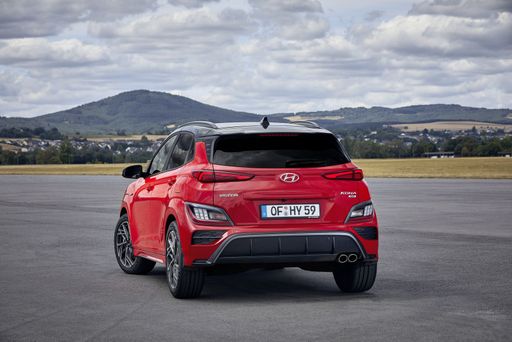 @ Hyundai Motor Company
@ Hyundai Motor Company
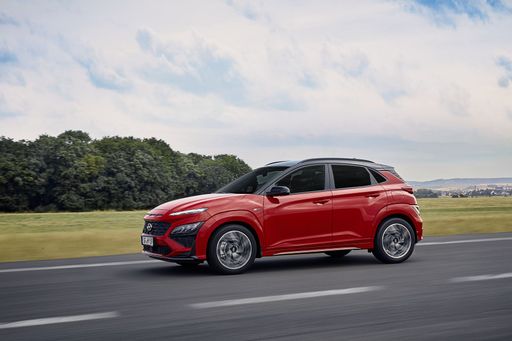 @ Hyundai Motor Company
@ Hyundai Motor Company
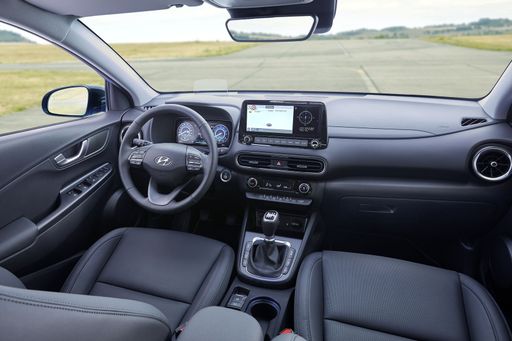 @ Hyundai Motor Company
@ Hyundai Motor Company
Kia Niro
The Kia Niro presents itself as a versatile and eco-friendly SUV, blending a stylish design with advanced hybrid technology. Its spacious interior offers comfort and practicality, making it ideal for both city driving and longer journeys. With a focus on efficiency and sustainability, the Niro is a compelling choice for environmentally conscious drivers.
details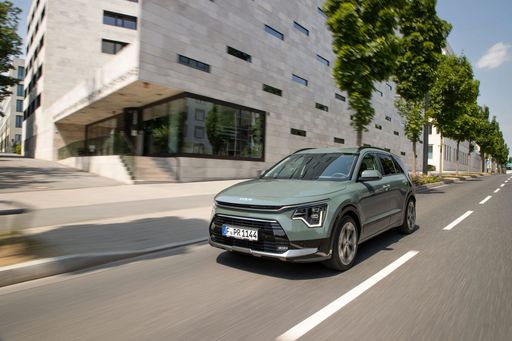 @ Kia Corporation
@ Kia Corporation
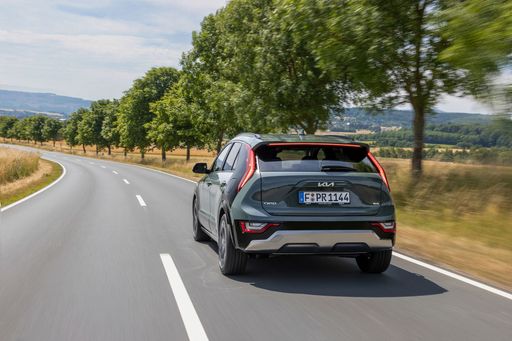 @ Kia Corporation
@ Kia Corporation
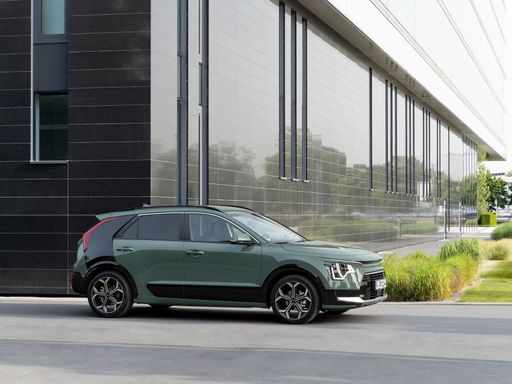 @ Kia Corporation
@ Kia Corporation
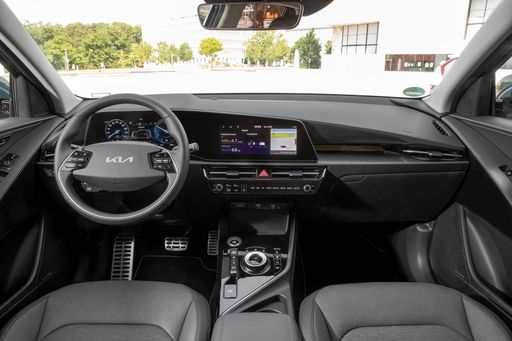 @ Kia Corporation
@ Kia Corporation
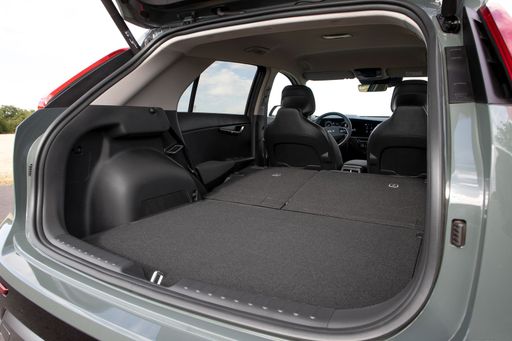 @ Kia Corporation
@ Kia Corporation
 @ Hyundai Motor Company
@ Hyundai Motor Company
|
 @ Kia Corporation
@ Kia Corporation
|
|
|
|
Costs and Consumption |
|
|---|---|
|
Price
23100 - 41600 £
|
Price
29100 - 38600 £
|
|
Consumption L/100km
4.6 - 7 L
|
Consumption L/100km
2.4 - 4.9 L
|
|
Consumption kWh/100km
14.6 - 16.8 kWh
|
Consumption kWh/100km
-
|
|
Electric Range
377 - 514 km
|
Electric Range
57 - 62 km
|
|
Battery Capacity
1.3 - 65.4 kWh
|
Battery Capacity
1.3 - 11.1 kWh
|
|
co2
0 - 163 g/km
|
co2
53 - 111 g/km
|
|
Fuel tank capacity
38 - 47 L
|
Fuel tank capacity
37 - 42 L
|
Dimensions and Body |
|
|---|---|
|
Body Type
SUV
|
Body Type
SUV
|
|
Seats
5
|
Seats
5
|
|
Doors
5
|
Doors
5
|
|
Curb weight
1370 - 1773 kg
|
Curb weight
1474 - 1594 kg
|
|
Trunk capacity
466 L
|
Trunk capacity
348 - 451 L
|
|
Length
4350 - 4385 mm
|
Length
4420 mm
|
|
Width
1825 mm
|
Width
1825 mm
|
|
Height
1580 - 1585 mm
|
Height
1545 mm
|
|
Max trunk capacity
1300 L
|
Max trunk capacity
1342 - 1445 L
|
|
Payload
420 - 490 kg
|
Payload
466 kg
|
Engine and Performance |
|
|---|---|
|
Engine Type
Electric, Petrol, Full Hybrid
|
Engine Type
Full Hybrid, Plugin Hybrid
|
|
Transmission
Automatic, Manuel
|
Transmission
Automatic
|
|
Transmission Detail
Manual Gearbox, Dual-Clutch Automatic
|
Transmission Detail
Dual-Clutch Automatic
|
|
Drive Type
Front-Wheel Drive, All-Wheel Drive
|
Drive Type
Front-Wheel Drive
|
|
Power HP
115 - 218 HP
|
Power HP
138 - 180 HP
|
|
Acceleration 0-100km/h
7.8 - 11.9 s
|
Acceleration 0-100km/h
9.9 - 11.4 s
|
|
Max Speed
162 - 210 km/h
|
Max Speed
170 - 185 km/h
|
|
Torque
200 - 265 Nm
|
Torque
265 Nm
|
|
Number of Cylinders
3 - 4
|
Number of Cylinders
4
|
|
Power kW
85 - 160 kW
|
Power kW
102 - 132 kW
|
|
Engine capacity
998 - 1598 cm3
|
Engine capacity
1580 cm3
|
General |
|
|---|---|
|
Model Year
2024 - 2025
|
Model Year
2025
|
|
CO2 Efficiency Class
A, D, C, E, F
|
CO2 Efficiency Class
C, B
|
|
Brand
Hyundai
|
Brand
Kia
|
Is the Hyundai Kona offered with different drivetrains?
Available configurations include Front-Wheel Drive or All-Wheel Drive.
The prices and data displayed are estimates based on German list prices and may vary by country. This information is not legally binding.
